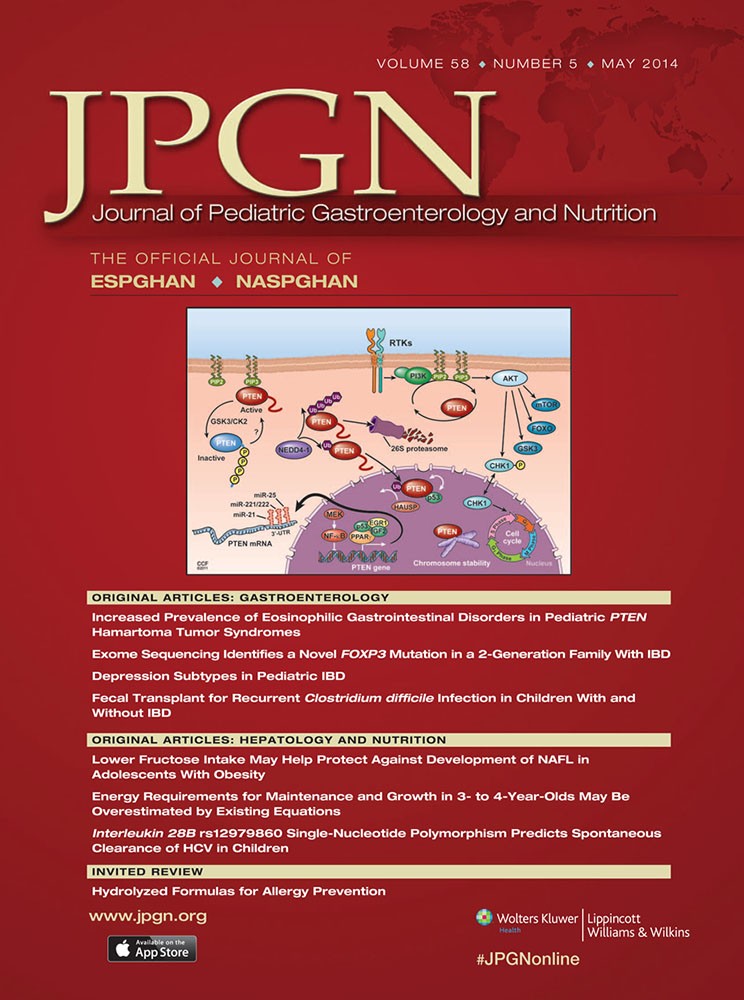Lower Fructose Intake May Help Protect Against Development of Nonalcoholic Fatty Liver in Adolescents With Obesity
This article has been developed as a Journal CME Activity by NASPGHAN. Visit: http://www.naspghan.org/wmspage.cfm?parm1=742 to view instructions, documentation, and the complete necessary steps to receive CME credit for reading this article.
Core funding for the Western Australian Pregnancy Cohort (Raine) Study was provided by the University of Western Australia, the Faculty of Medicine, Dentistry and Health Sciences at the University of Western Australia, the Telethon Institute for Child Health Research, the Women and Infants Research Foundation, Curtin University, and the Raine Medical Research Foundation. Specific data collection for the 14-year follow-up was funded by the National Health and Medical Research Council (project grant 211912). Data collection and biological specimens at the 17-year follow-up were also funded by the National Health and Medical Research Council (program grant ID 353514 and project grant ID 403981). The Telstra Research Foundation, the West Australian Health Promotion Foundation, the Australian Rotary Health Research Fund, the National Heart Foundation of Australia/Beyond Blue and the National Health and Medical Research Council (project grant ID 634445, practitioner fellowship ID 513761, program grant ID 003209) provided further funding for investigation and data support. L.A.A. was supported by a Gastroenterology Society of Australia Career Development Award. J.K.O. is employed and supported by grants from Curtin University of Technology and Murdoch University, Perth. The other authors report no conflicts of interest.
ABSTRACT
Objectives:
Although obesity is a major risk factor for nonalcoholic fatty liver (NAFL), not all individuals with obesity develop the condition, suggesting that other factors such as diet may also contribute to NAFL development. We evaluated associations between fructose and total sugar intake and subsequent diagnosis of NAFL in adolescents with obesity and without obesity in a population-based cohort.
Methods:
Adolescents participating in the Western Australian Pregnancy Cohort (Raine) Study completed 3-day food records and body mass index measurement at age 14 years. At age 17 years, participants underwent abdominal ultrasound to determine NAFL status. Multivariable logistic regression models were used to analyse associations between energy-adjusted fructose and total sugar intake and NAFL status. Food diaries and liver assessments were completed for 592 adolescents.
Results:
The prevalence of NAFL at age 17 was 12.8% for the total group and 50% for adolescents with obesity. Fructose intake did not significantly differ between adolescents with or without NAFL in our cohort as a whole. Among adolescents with obesity, those without NAFL had significantly lower energy-adjusted fructose intake at age 14 years compared with those with NAFL (mean ± standard deviation [SD] 38.8 ± 19.8 g/day, vs 55.7 ± 14.4 g/day, P = 0.02). Energy-adjusted fructose intake was independently associated with NAFL in adolescents with obesity (OR [odds ratio] 1.09, 95% CI 1.01–1.19, P = 0.03) after the adjustment for confounding factors. Energy-adjusted total sugar intake showed less significance (OR 1.03, 95% CI 0.999–1.07, P = 0.06). No significant associations were observed in other body mass index categories.
Conclusions:
Lower fructose consumption in adolescents with obesity at 14 years is associated with a decreased risk of NAFL at 17 years. Fructose rather than overall sugar intake may be more physiologically relevant in this association.




